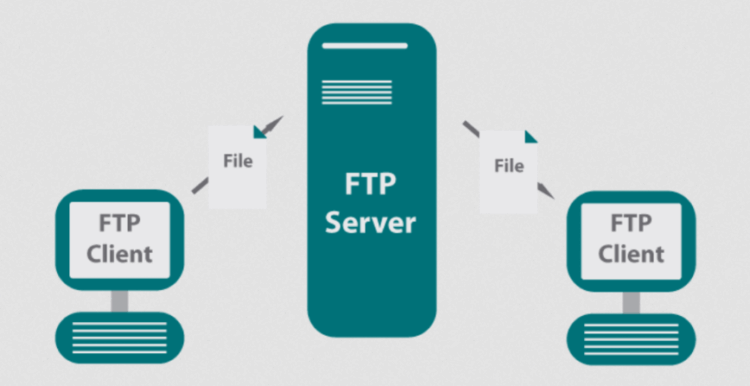Delve into the world of VPS servers, where flexibility and control reign supreme. Learn how this innovative hosting solution can revolutionize your online presence and take your website to new heights.
From setting up to managing resources and ensuring security, VPS servers offer a myriad of benefits for users looking to elevate their web hosting experience.
Introduction to VPS server
A VPS server, or Virtual Private Server, is a virtual machine that functions independently and is used to host websites and applications. It provides a dedicated portion of resources within a larger physical server, offering more control, security, and customization options compared to shared hosting.Difference between VPS server and shared hosting
Shared hosting involves multiple websites sharing the resources of a single server, leading to potential performance issues and security risks. On the other hand, a VPS server allocates specific resources to each virtual machine, ensuring better performance, security, and stability for hosted websites and applications.Advantages of using a VPS server
- Enhanced performance: With dedicated resources, VPS servers offer better performance and faster loading times for websites and applications.
- Increased control: Users have more control over server configurations, software installations, and security settings on a VPS server.
- Improved security: Isolation between virtual machines on a VPS server enhances security by reducing the risk of data breaches or unauthorized access.
- Scalability: VPS servers can easily be scaled up or down based on resource requirements, allowing for flexibility as websites and applications grow.
- Customization: Users can customize server settings and install specific software to meet their unique hosting needs on a VPS server.
Setting up a VPS server
Setting up a VPS server involves several steps to ensure it is ready for use. From choosing the right operating system to selecting a control panel for management, each step is crucial in the setup process.Operating Systems for VPS Server
When setting up a VPS server, you have the flexibility to choose from various operating systems based on your requirements. Some of the popular options include:- Linux: Known for its stability and security, Linux distributions like Ubuntu, CentOS, and Debian are commonly used on VPS servers.
- Windows: If you prefer a Windows environment, Windows Server operating systems can also be installed on a VPS server.
- Others: Apart from Linux and Windows, there are other operating systems like FreeBSD and OpenBSD that can be installed on VPS servers.
Control Panel Options for VPS Server
Choosing the right control panel is essential for managing your VPS server efficiently. Here are some popular control panel options to consider:- cPanel: Known for its user-friendly interface and comprehensive features, cPanel is a preferred choice for many VPS server users.
- Plesk: Plesk offers a powerful control panel with a focus on security and ease of use, making it a popular choice among VPS server owners.
- DirectAdmin: DirectAdmin is another control panel option that provides a simple and lightweight solution for managing VPS servers.
Managing resources on a VPS server
Managing resources on a VPS server is crucial for ensuring optimal performance and efficiency. Proper allocation of resources like CPU, RAM, and storage is essential to meet the demands of your applications and users.Allocating Resources on a VPS server
When setting up a VPS server, you can allocate resources based on the requirements of your applications. Here are some best practices for allocating resources effectively:- Allocate CPU cores based on the workload of your applications. Assign more cores to CPU-intensive tasks and fewer cores to less demanding applications.
- Distribute RAM based on the memory requirements of your applications. Ensure that each application has enough RAM to operate efficiently without causing performance bottlenecks.
- Allocate storage space according to the data storage needs of your applications. Consider using SSDs for faster read/write speeds and better performance.
Optimizing Resource Usage on a VPS server
Optimizing resource usage on a VPS server can help improve performance and reduce costs. Here are some best practices for optimizing resource usage:- Implement resource monitoring tools to track CPU, RAM, and storage usage. This will help you identify bottlenecks and optimize resource allocation.
- Regularly review resource usage patterns and adjust allocations accordingly. This will ensure that resources are utilized efficiently and effectively.
- Consider implementing load balancing and scaling strategies to distribute workloads evenly across multiple servers and optimize resource usage.
Monitoring Resource Usage and Performance on a VPS server
Monitoring resource usage and performance on a VPS server is essential for maintaining optimal operation. Here are some ways to monitor resource usage and performance effectively:- Use monitoring tools like Nagios, Zabbix, or Prometheus to track CPU, RAM, and storage usage in real-time. Set up alerts for abnormal resource usage to address issues promptly.
- Regularly review performance metrics such as response times, throughput, and error rates to identify performance bottlenecks and optimize resource allocation.
- Utilize logging and analytics tools to gain insights into resource usage patterns and identify areas for improvement in resource management.










